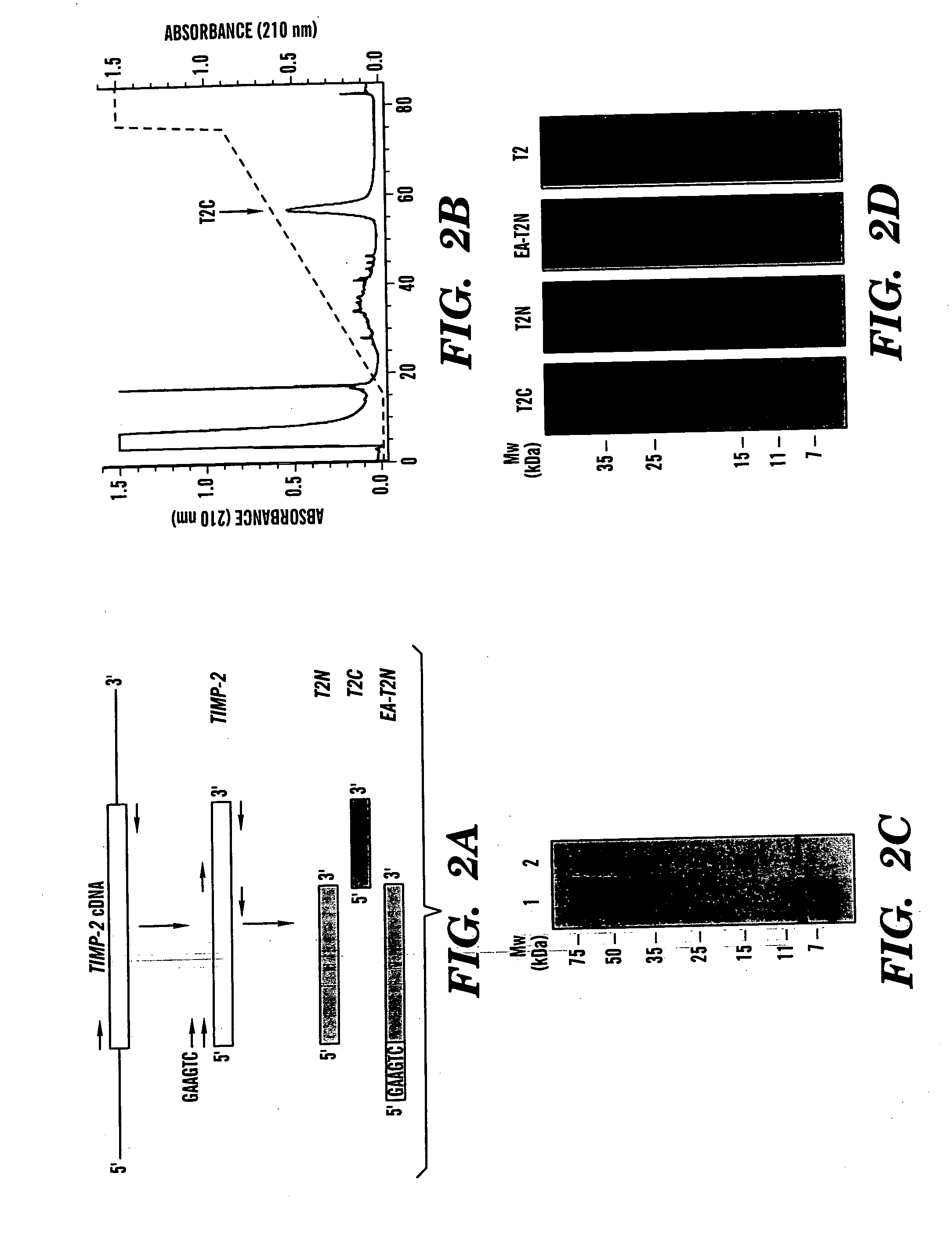Novel antiangiogenic peptides
a technology of antiangiogenic peptides and antiangiogenic peptides, which is applied in the direction of depsipeptides, peptide/protein ingredients, chemical treatment enzyme inactivation, etc., can solve the problems of tumor growth, excessive or insufficient blood vessel growth, and severe negative consequences of inappropriate angiogenesis, and achieve the effect of inhibiting endothelial cell proliferation
- Summary
- Abstract
- Description
- Claims
- Application Information
AI Technical Summary
Benefits of technology
Problems solved by technology
Method used
Image
Examples
example
Experimental Procedures
Cloning and Expression of hTIMP-2 and hTIMP-2 Domains
[0106] Human TIMP-2 was cloned via PCR of a human fetal heart cDNA library (Clontech, Palo Alto, Calif.) using primers specific for the mature form of TIMP-2. Two separate TIMP-2 domains were produced using PCR primers designed to yield two fragments of TIMP-2 which encode for either the three N-terminal loops (T2N) or the three C-terminal loops (T2C). A fourth construct, designated EA-T2N, was designed to produce an inactive mutant of T2N using PCR to add two amino acid residues, EA, to the N-terminus of T2N. The full-length TIMP-2 PCR product, as well as the two TIMP-2 fragments and the mutant EA-T2N, were sub-cloned into the yeast expression vector pPICZαA (Invitrogen) and their sequences verified. C-terminal His-tags were designed into each of the constructs to aid in the purification of expressed proteins. Linearized vectors were electroporated into the methylotrophic yeast Pichia pastoris for expres...
PUM
| Property | Measurement | Unit |
|---|---|---|
| pH | aaaaa | aaaaa |
| pH | aaaaa | aaaaa |
| pH | aaaaa | aaaaa |
Abstract
Description
Claims
Application Information
 Login to View More
Login to View More - R&D
- Intellectual Property
- Life Sciences
- Materials
- Tech Scout
- Unparalleled Data Quality
- Higher Quality Content
- 60% Fewer Hallucinations
Browse by: Latest US Patents, China's latest patents, Technical Efficacy Thesaurus, Application Domain, Technology Topic, Popular Technical Reports.
© 2025 PatSnap. All rights reserved.Legal|Privacy policy|Modern Slavery Act Transparency Statement|Sitemap|About US| Contact US: help@patsnap.com



